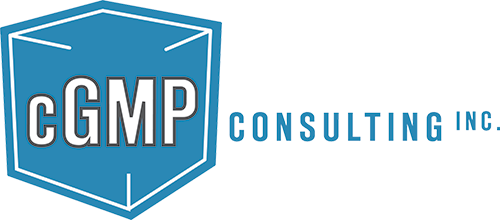Driving Continuous Improvement in FDA-Regulated Industries: Strategies to Prevent FDA Form 483 Issues

Introduction
In the FDA-regulated industries, such as pharmaceuticals, biotechnology, medical devices, dietary supplements and cosmetics maintaining compliance with Good Manufacturing Practices (GMP) is paramount. Despite rigorous regulations, many companies receive Form 483 observations—official notices issued by the FDA for non-compliance with regulatory standards. These findings can be costly, delay product release, and damage a company’s reputation.
However, a focus on continuous improvement can reduce the likelihood of receiving these observations. This article explores effective strategies for preventing FDA Form 483 issues, helping companies maintain compliance, and fostering a culture of quality.
Understanding the Impact of FDA Form 483 Observations
FDA Form 483 is issued when investigators observe conditions that may violate the Food, Drug, and Cosmetic (FD&C) Act. Common 483 observations include issues with data integrity, insufficient investigations of deviations, equipment failures, and poor documentation practices. These observations can escalate to warning letters, import alerts, or even plant shutdowns if not addressed properly.
Proactively addressing these issues through continuous improvement efforts can prevent compliance gaps and ensure that organizations are always inspection-ready. Here are strategies to drive continuous improvement and avoid Form 483 observations.
Strategies for Preventing Form 483 Observations
1. Strengthen Quality Management Systems (QMS)
A robust Quality Management System is the foundation of GMP compliance. Companies should:
- Regularly Review and Update SOPs: Standard Operating Procedures (SOPs) must be comprehensive, current, and accessible. SOPs should be updated to reflect any process changes and reviewed at least annually.
- Implement Quality Metrics: Use key performance indicators (KPIs) like batch failure rates, deviation rates, and customer complaints to monitor the health of the QMS. Analyze these metrics to identify areas for improvement and prevent recurrent issues.
- Establish a CAPA Program: Corrective and Preventive Actions (CAPA) programs are critical in identifying root causes of issues and implementing solutions to prevent recurrence. A well-documented CAPA process ensures that all corrective actions are traceable and effective.
2. Focus on Data Integrity
Data integrity remains a top issue cited by the FDA. It is crucial that companies:
- Validate Electronic Systems: Ensure that any software used for data collection or documentation is validated according to 21 CFR Part 11 requirements. This includes maintaining audit trails and ensuring data is secure and cannot be altered without traceability.
- Conduct Data Integrity Audits: Regularly audit data management practices to ensure compliance with ALCOA+ principles (Attributable, Legible, Contemporaneous, Original, Accurate, Complete, Consistent, Enduring, and Available).
- Train Personnel on Data Practices: Educate employees on proper data handling, including how to record data contemporaneously and the importance of maintaining data integrity.
3. Enhance Training Programs
A well-trained workforce is key to maintaining compliance and preventing errors that can lead to FDA observations. To achieve this:
- Implement Comprehensive Training Plans: Training should be tailored to the specific roles and responsibilities of each employee, with a focus on GMP principles, SOPs, and any new regulatory requirements.
- Conduct Regular Refresher Courses: To ensure skills remain sharp, conduct ongoing training and refresher courses, especially after any updates to regulations or SOPs.
- Evaluate Training Effectiveness: Use assessments and on-the-job evaluations to ensure that training has been effective and that employees understand how to apply their training to maintain compliance.
4. Focus on Documentation Excellence
Proper documentation is a critical part of GMP compliance. Documentation issues are frequently cited in Form 483 observations. Best practices include:
- Adopt the “Right First Time” Approach: Focus on getting documentation right the first time, reducing the need for revisions or corrections. This means paying attention to detail in records, batch production records, and deviation reports.
- Implement Document Review Processes: Establish procedures for periodic review of key documents, such as production records and validation protocols, to identify and correct any deficiencies before an audit.
- Maintain Clear Audit Trails: For electronic and paper-based systems, ensure that any changes or updates to records are clearly documented, with reasons for changes and approval records.
5. Improve Facility and Equipment Maintenance
Maintaining equipment and facilities to the highest standards is essential to prevent contamination, cross-contamination, and equipment malfunctions. Common observations related to equipment include inadequate calibration and maintenance.
- Regular Calibration and Preventive Maintenance: Implement a proactive maintenance schedule for all equipment, including regular calibration and cleaning to ensure equipment operates within specified limits.
- Qualification and Validation of Equipment: Ensure all new equipment is qualified (Installation Qualification, Operational Qualification, Performance Qualification) before use, and conduct periodic requalification as part of routine maintenance.
- Maintain Detailed Maintenance Records: Document all maintenance activities to demonstrate that equipment is maintained according to manufacturer recommendations and cGMP requirements.
6. Conduct Internal Audits
Internal audits are a proactive tool for identifying compliance gaps before an FDA inspection.
- Develop a Risk-Based Audit Program: Focus on high-risk areas such as data management, production processes, and quality control labs. Use the findings to create targeted improvement plans.
- Engage Independent Reviewers: Consider using third-party auditors to provide an unbiased assessment of your compliance status and offer insights into areas for improvement.
- Act on Audit Findings: Treat internal audit findings as opportunities for improvement. Develop CAPAs for any issues identified during internal audits and follow up to ensure effectiveness.
Conclusion
Continuous improvement is key to maintaining compliance and avoiding costly FDA Form 483 observations in regulated industries. By strengthening quality systems, focusing on data integrity, enhancing training, and conducting regular internal audits, companies can create a culture of quality and ensure they are always prepared for FDA scrutiny. At cGMP Consulting, we specialize in helping companies build and sustain these robust systems, ensuring compliance and driving long-term success.
By implementing these strategies, FDA-regulated companies can not only meet regulatory requirements but also achieve higher levels of operational efficiency, ensuring product quality and safety for their customers. Reach out to us at cGMP Consulting to learn more about how we can support your continuous improvement journey and prepare your organization for a successful future.






